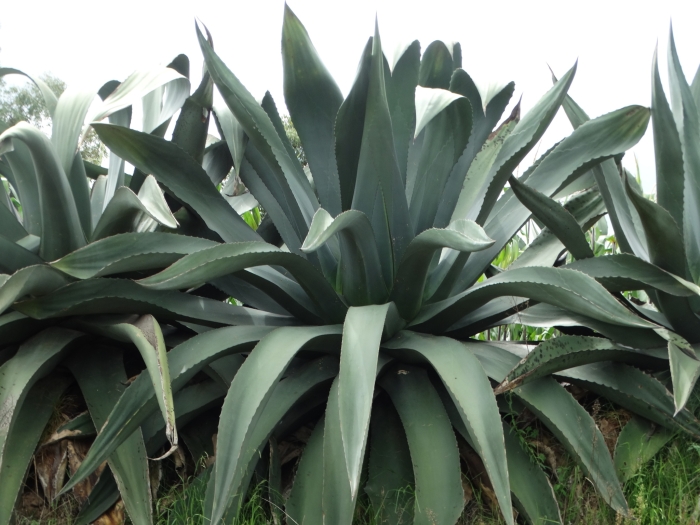Maguey Verde Grande
(Agave atrovirens)
Maguey Verde Grande (Agave atrovirens)
/
/

Juan Rafael Rodríguez Razgado
CC BY 4.0
Image By:
Juan Rafael Rodríguez Razgado
Recorded By:
Copyright:
CC BY 4.0
Copyright Notice:
Photo by: Juan Rafael Rodríguez Razgado | License Type: CC BY 4.0 | License URL: http://creativecommons.org/licenses/by/4.0/ | Rights Holder: Juan Rafael Rodríguez Razgado | Publisher: iNaturalist | Date Created: 2017-07-20T15:07:47-07:00 |

















Estimated Native Range
Summary
Agave atrovirens, commonly known as Maguey Verde Grande, is an evergreen succulent native to the semi-arid highlands and volcanic soils of central Mexico. It is the largest of all the Agaves, with mature plants occasionally reaching a weight of two long tons (2 metric tonnes). Each robust, fleshy leaf can be up to 14 feet 9 inches (4.50 meters) in length and weigh one hundred pounds (45 kg) apiece, forming a dense rosette. After many years, a tall flower spike, resembling a giant asparagus stalk, emerges from the center of the rosette, eventually reaching over forty feet (more than 12 meters) in height. It develops side branches near the top, adorned with numerous flowers that open red and gradually turn yellow. Each rosette blooms once, sets fruit, and then dies, a characteristic known as monocarpic.
Maguey Verde Grande is valued for its dramatic architectural form and is often used as a focal point in xeriscapes, rock gardens, and large open spaces. It is drought-tolerant, requiring very low amounts of water, and thrives in well-draining soils with medium to fast drainage. Full sun exposure is ideal to maintain its health and vigor. While it is generally low-maintenance, its massive size at maturity should be considered when planting, as it needs ample space to accommodate its spread. Agave atrovirens is also culturally significant in Mexico for the production of pulque, an alcoholic beverage. Potential problems include agave snout weevil infestation, which can be mitigated by maintaining plant health and monitoring for early signs of damage.CC BY-SA 4.0
Maguey Verde Grande is valued for its dramatic architectural form and is often used as a focal point in xeriscapes, rock gardens, and large open spaces. It is drought-tolerant, requiring very low amounts of water, and thrives in well-draining soils with medium to fast drainage. Full sun exposure is ideal to maintain its health and vigor. While it is generally low-maintenance, its massive size at maturity should be considered when planting, as it needs ample space to accommodate its spread. Agave atrovirens is also culturally significant in Mexico for the production of pulque, an alcoholic beverage. Potential problems include agave snout weevil infestation, which can be mitigated by maintaining plant health and monitoring for early signs of damage.CC BY-SA 4.0
Plant Description
- Plant Type: Succulent
- Height: 6-8 feet
- Width: 3-4 feet
- Growth Rate: Slow
- Flower Color: Yellow
- Flowering Season: Summer
- Leaf Retention: Evergreen
Growth Requirements
- Sun: Full Sun
- Water: Very Low, Low
- Drainage: Medium, Fast
Common Uses
Bee Garden, Bird Garden, Drought Tolerant, Fire Resistant, Hummingbird Garden, Low Maintenance, Rabbit Resistant, Rock Garden
Natural Habitat
Semi-arid highlands and volcanic soils of central Mexico
Other Names
Common Names: Maguey, Maguey De La Cumbre
Scientific Names: , Agave atrovirens, Agave coccinea, Agave schlechtendalii,
GBIF Accepted Name: Agave atrovirens Karw. ex Salm-Dyck